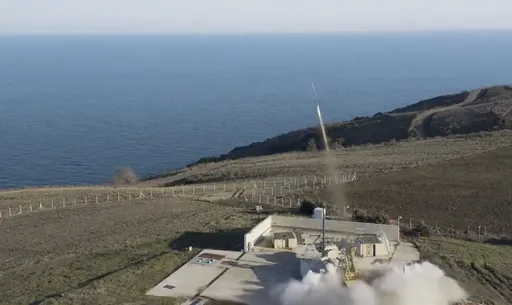The US government is developing an advanced satellite system, which it plans to launch into orbit by 2025, to detect and track hypersonic missile threats allegedly emanating from China and Russia.
Both Beijing and Moscow have been making strides in their development of hypersonic missiles. Last year, China tested what US officials say was a hypersonic missile, and Russia has made use of the weapons in its ongoing military conflict with Ukraine.
A new arms race for an emerging class of weapon appears to be going on between these three powers, and seeing the interest of potential buyers, arms makers are also pitching their hypersonic weapons programmes to investors.
What are hypersonic missiles?
They are difficult to track and shoot down because they maneuver more in flight than conventional weapons that travel in predictable paths.
Hypersonic missiles are designed to travel in the upper atmosphere beyond Mach 5 - at more than five times the speed of sound, or about 6,200 km per hour, and could fly 100 feet above the ocean without being detected.
While a hypersonic missile may not be as fast as an intercontinental missile, it is able to vary its trajectory. For example, the maneuverability of a hypersonic weapon is what differentiates it from a ballistic missile that follows a set course.
Iain Boyd, an aerospace engineer, wrote in an article published in The Conversation, presently there are three types of such weapons: aero-ballistic, glide vehicles and cruise missiles.
Aero-ballistic missiles are launched from an aircraft, accelerated to hypersonic speed and maneuver towards its target. A glide vehicle, on the other hand, is launched through a rocket that glides towards a target, whereas a cruise missile would also be boosted to hypersonic speed through a rocket, but using an air-breathing engine called scramjet to sustain the speed.
The US, China and Russia are said to have the most advanced hypersonic weapons capability, whereas several other countries are investigating and experimenting with the technology.
How will the new US satellites stop hypersonic missiles?
The US says it is intending to launch 28 satellites up in orbit in the coming three years.
The satellites, it says, will be launched in two batches of 14, contracts for which have been handed out to teams led by L3Harris Technologies and Northrop Grumman Strategic Space Systems for a total of $2.5 billion that includes launches, ground control and support.
Historically, the US hasn’t deployed satellites aimed at tracking and detection of hypersonic weapons.
The new satellites will equip the US to detect the launch of a hypersonic missile, as well as follow it as the missile changes course, calculating the direction it is headed to and provide that data to forces who can launch interceptors.
The first batch would be at a lower orbit of about 1,000 km, and the second would be at a medium orbit of about 10,000-20,000 km for a more resilient presence.
Officials at the Pentagon says the first 28 satellites will likely be followed by another batch of about 54 satellites.
Derek Tournear, director of the US Space Development Agency, says: “These satellites are specifically designed to go after that next generation version of threats out there so that we can detect and track these hypersonic maneuvering vehicles and predict their impact point.”
























